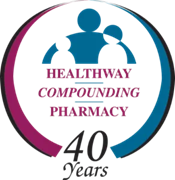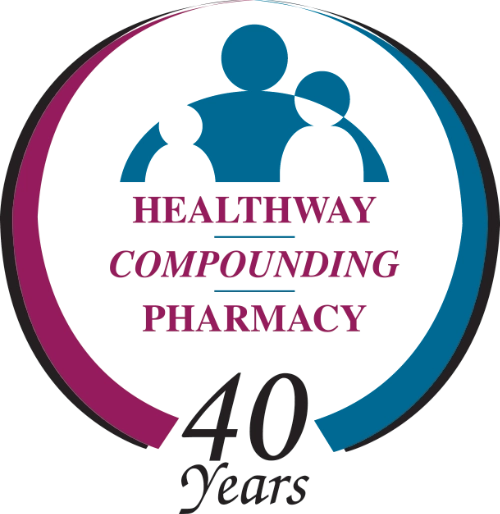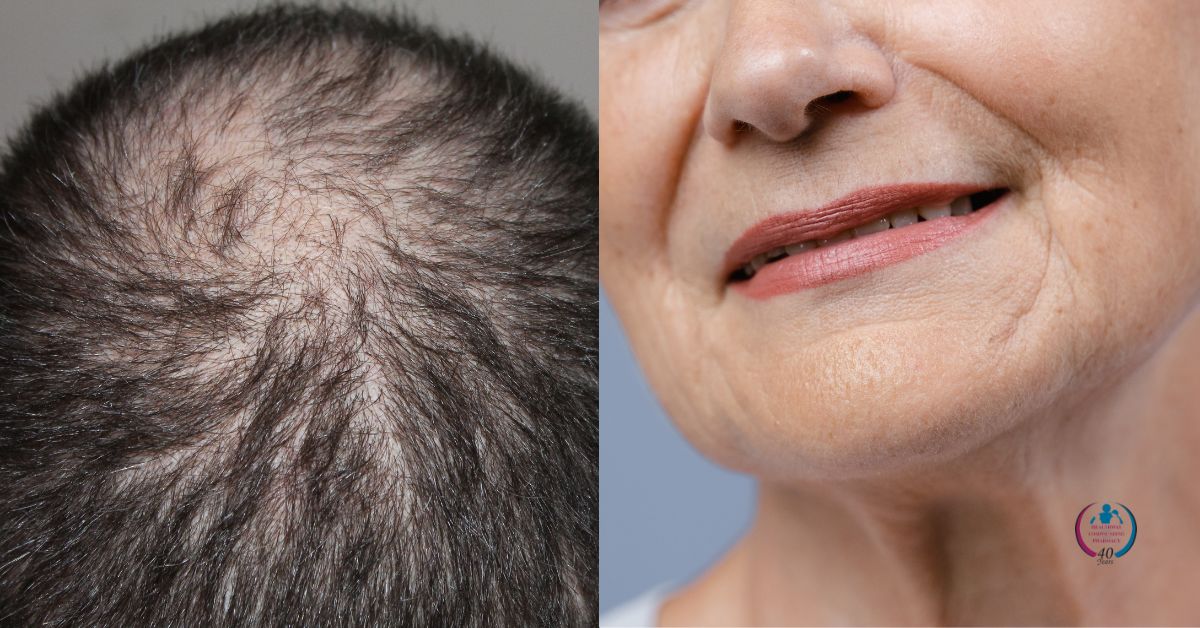Healthway Compounding Pharmacy, Michigan’s first PCAB-accredited compounding pharmacy, is proud to provide innovative dermatological solutions to patients across the state—including northern Michigan, the Thumb, and the Upper Peninsula. Dermatologists and other prescribers rely on customized topical medications to address common yet complex skin conditions where commercial products fall short. From hair loss and rosacea to melasma and aging skin, compounded dermatology prescriptions offer personalization, potency, and patient comfort.
Why Choose Compounded Dermatology Prescriptions?
Unlike one-size-fits-all commercial creams and ointments, compounded medications are formulated for each individual’s unique skin needs and sensitivities. Prescribers choose compounded options when:
- A commercial product contains allergens or irritants.
- A specific combination of active ingredients isn’t available in a single commercial product.
- Standard dosages are ineffective or intolerable.
- Customized bases are needed for sensitive or aging skin.
- Patients have difficulty accessing expensive brand-name drugs or need more affordable alternatives.

Dermatologists, nurse practitioners, physician assistants, and some family practitioners commonly prescribe compounded dermatologic medications — especially for chronic or resistant conditions.
Common Conditions Prescribed Compounded Dermatology Formulas
Michigan prescribers utilize our Dermatology Rx Order Form for easy prescriptions.
Here are the leading skin concerns practitioners address with compounded medications:
1. Hair Loss (Alopecia)
Patients: Men and women with androgenic alopecia, telogen effluvium, or thinning hair from hormonal changes or stress.
Popular Prescriptions
- Men’s Hair Growth: Finasteride / Minoxidil / Retinoic Acid
- Women’s Hair Growth: Azelaic Acid / Minoxidil / Retinoic Acid
Additional Options:
- Spironolactone
- Topical T3 (liothyronine)
- Melatonin
Why Compound? Commercial options don’t offer combination formulas or accommodate hormonal therapies. Compounding allows integration of multiple active ingredients for synergistic effect, and lower side effects from systemic use.
2. Rosacea
Patients: Adults with inflammatory or vascular rosacea, often with persistent redness, pustules, and skin sensitivity.
Popular Prescriptions:
- Azelaic Acid / Ivermectin / Metronidazole
- Oxymetazoline / Ivermectin
- Ketotifen Cream
Why Compound? Combination formulas target inflammation, mites (Demodex), and vascular symptoms in one preparation — minimizing the need for multiple products and reducing irritation.
3. Skin Lightening & Melasma
Patients: Individuals with melasma, hyperpigmentation, or post-inflammatory dark spots.
Popular Prescriptions:
- Fluocinolone / Hydroquinone / Tretinoin
- Hydrocortisone / Hydroquinone / Tretinoin
- Optional: Kojic Acid and Vitamin C derivatives
Why Compound? These formulas are similar to the “Kligman’s Trio” but with tailored steroid strength and hydroquinone concentration, often needed for sensitive skin or long-term use. Higher concentrations can be compounded safely when commercial options are too weak.
4. Aging Skin & Wrinkles
Patients: Adults seeking cosmetic improvements in skin tone, elasticity, and texture.
Commonly Compounded Ingredients:
- Retinoic acid
- Niacinamide
- Growth factors
- Peptides
- Alpha-lipoic acid
Why Compound? Anti-aging regimens can be personalized for skin type, age, and tolerance — especially in mature or reactive skin. Compounding offers combinations not commercially available.
5. Acne (Teen & Adult)
Patients: Adolescents and adults with persistent or hormonal acne.
Top Formulas:
- Azelaic / Clindamycin / Niacinamide / Tretinoin
- Clindamycin / Benzoyl Peroxide
- Clindamycin / Niacinamide / Tretinoin
Why Compound? One custom cream may reduce clogged pores, inflammation, and bacteria — and omit alcohols or fragrances that irritate acne-prone skin.
6. Psoriasis, Eczema & Skin Inflammation
Patients: Children and adults with chronic inflammatory skin conditions.
Eczema Formulas:
- Betamethasone / Mupirocin (strength varies by age)
- Triamcinolone
Psoriasis Options:
- Clobetasol in Dermazinc
- Montelukast / Ketotifen
- LCD Shampoo
Why Compound? Compounded topicals may reduce flares, improve skin barrier function, and eliminate sensitizing preservatives found in commercial products.
7. Hyperhidrosis (Excessive Sweating)
Patients: Adults with axillary, palmar, or plantar hyperhidrosis.
Top Formulas:
- Aluminum Chloride
- Aluminum Chloride + Glycopyrrolate
- Atropine or Glycopyrrolate Roll-On
Why Compound? These medications are potent, customizable, and can combine multiple drugs for stubborn cases that don’t respond to OTC antiperspirants.
8. Scars & Post-Procedure Recovery
Patients: Individuals with new or old scars, keloids, or post-procedure skin healing.
Popular Ingredients:
- Aloe Vera
- Naltrexone
- Topiramate
- Clindamycin
Why Compound? Combining anti-inflammatory, anesthetic, and regenerative ingredients may help reduce pain, inflammation, and discoloration while promoting skin healing.
Why Michigan Dermatologists & PCPs Trust Healthway Compounding Pharmacy
Prescribers choose Healthway Compounding Pharmacy because we:
- Are PCAB-accredited (the gold standard in compounding pharmacy quality).
- Customize formulations with USP-grade ingredients.
- Serve all of Michigan, including remote and underserved areas.
- Offer prescriber support and formulation guidance.


Prescribers choose Healthway Compounding Pharmacy because we:
- Are PCAB-accredited (the gold standard in compounding pharmacy quality).
- Customize formulations with USP-grade ingredients.
- Serve all of Michigan, including remote and underserved areas.
Offer prescriber support and formulation guidance.
Whether you’re a dermatologist in Traverse City or a family practitioner in Alpena, we can tailor dermatology solutions for your patients’ specific needs.
Streamlining the Process: Healthway’s Prefilled Prescription Forms for Dermatology
Prescribing compounded dermatologic medications doesn’t have to be time-consuming or complex. Healthway Compounding Pharmacy simplifies the process for prescribers across Michigan by offering professionally designed, prefilled prescription order forms tailored to common dermatology needs.
These forms are structured to make prescribing easy, fast, and compliant — whether you’re addressing hair loss, rosacea, eczema, melasma, or acne.
Key Features of Using Healthway’s Prefilled Forms:
- Time-Saving Templates
Simply check the box next to your preferred compound. Forms include the most commonly prescribed options for each condition, with strength, base, and suggested quantities already included. - Customizable Fields
While the most frequently used strengths are prelisted, there are blank fields for customizing dosages or ingredients to suit your patient’s specific needs. - Condition-Specific Layout
Each section of the form is clearly labeled by condition — e.g., Hair Loss, Rosacea, Lightening Creams, Scars, etc.—so you can easily locate relevant formulations. - Patient-Specific Dispensing
All compounded medications are prepared and labeled for individual patient use, ensuring compliance with state regulations and offering personalized care. - Fax-Ready
Forms can be printed or faxed directly to Healthway Compounding Pharmacy at 989-791-4603.
Ready to Get Started?
Healthway Compounding Pharmacy offers individualized dermatological compounds based on prescription orders from licensed Michigan practitioners. We partner closely with Michigan’s leading providers to create formulas that support both cosmetic and clinical results.
Need help choosing a formula? Contact us today to speak with a pharmacist or request a consultation for your patient.
References
Chong, M., & Fonacier, L. (2016). Treatment of eczema: corticosteroids and beyond. Clinical reviews in allergy & immunology, 51, 249-262. Link
Dessinioti, C., Lotti, T. M., Stratigos, A. J., Damevska, K., & Katsambas, A. D. (2023). Melasma. In European Handbook of Dermatological Treatments (pp. 651-661). Cham: Springer International Publishing. Link
Feldman, S. R., & Yentzer, B. A. (2009). Topical clobetasol propionate in the treatment of psoriasis: a review of newer formulations. American journal of clinical dermatology, 10(6), 397-406. Link
Griffiths, C., Russman, A. N., Majmudar, G., Singer, R. S., Hamilton, T. A., & Voorhees, J. J. (1993). Restoration of collagen formation in photodamaged human skin by tretinoin (retinoic acid). New England Journal of Medicine, 329(8), 530-535. Link
Nawrocki, S., & Cha, J. (2019). The etiology, diagnosis, and management of hyperhidrosis: a comprehensive review: therapeutic options. Journal of the American Academy of Dermatology, 81(3), 669-680. Link
Rathnayake, D., & Sinclair, R. (2010). Innovative use of spironolactone as an antiandrogen in the treatment of female pattern hair loss. Dermatologic clinics, 28(3), 611-618. Link
Walocko, F. M., Eber, A. E., Keri, J. E., Al‐harbi, M. A., & Nouri, K. (2017). The role of nicotinamide in acne treatment. Dermatologic therapy, 30(5), e12481. Link
Shapira, N. A., Lessig, M., Murphy, T. K., Annis, A. M., BS, J., & Lazoritz, M. (2003). Evaluation of open-label topiramate for scar therapy. Dermatology Online Journal, 9(5). Link
Zouboulis, C. C., Rabe, T., & Piquero-Martin, J. (2014). Compounding as a current therapeutic option in dermatology. Dermatologic Therapy, 27(2), 123–131. Link


